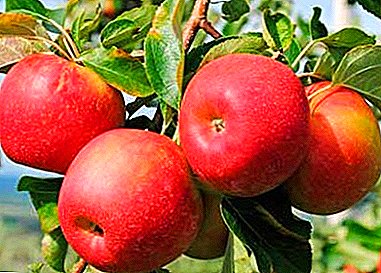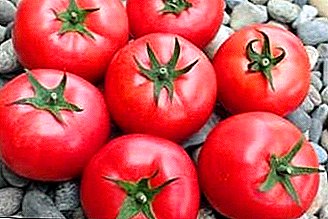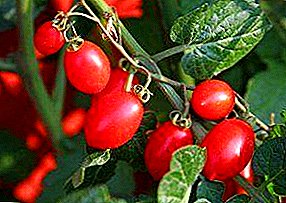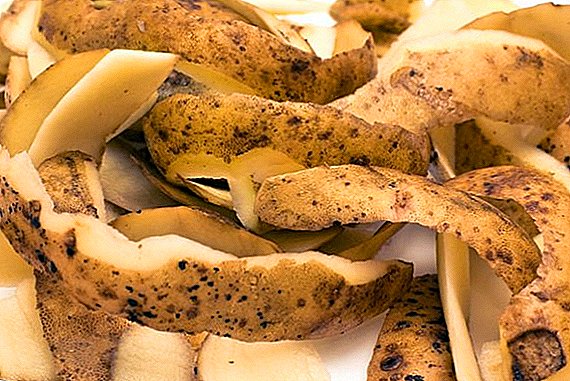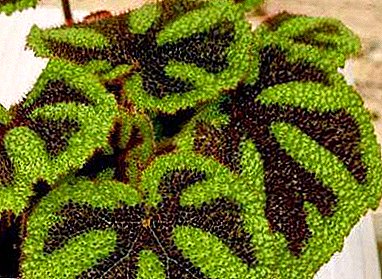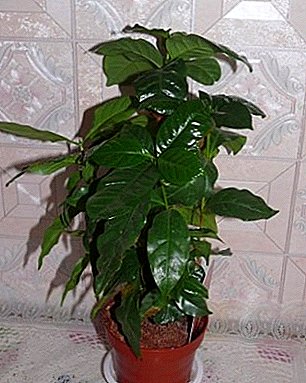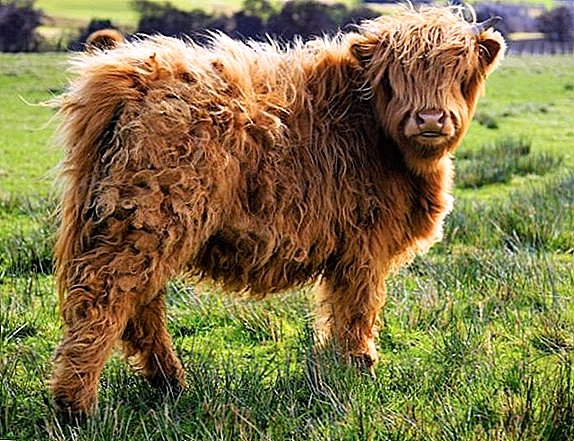 Cattle are not only large, but also miniature. Dwarfs of this genus are used for breeding as pets on mini-farms and in contact zoos, and are also in demand in organic animal husbandry. This article will discuss the popular breeds of dwarf cows, their main differences from cattle and the reasons for their low popularity in the post-Soviet countries.
Cattle are not only large, but also miniature. Dwarfs of this genus are used for breeding as pets on mini-farms and in contact zoos, and are also in demand in organic animal husbandry. This article will discuss the popular breeds of dwarf cows, their main differences from cattle and the reasons for their low popularity in the post-Soviet countries.
The main differences between dwarf cows
Mostly miniature members of the genus differ from their large counterparts in size, weight and productivity. For the first time, the breeding of dwarf cows was practiced in India, and since then the number of breeds of this species has grown to 30. The average height of a miniature animal at the withers is 90 cm, weight - from 80 to 200 kg.  For comparison, adult cows of large breeds weigh 700-800 kg and at the withers reach 1.5 m. One dwarf cow, depending on the breed, can produce from 3 to 8 liters of milk per day and produce the same dwarf offspring once a year. The average productivity of standard large animals is 23 liters of milk per day.
For comparison, adult cows of large breeds weigh 700-800 kg and at the withers reach 1.5 m. One dwarf cow, depending on the breed, can produce from 3 to 8 liters of milk per day and produce the same dwarf offspring once a year. The average productivity of standard large animals is 23 liters of milk per day.
Important! Crossing dwarf females with large males will lead to the fact that the female will not be able to settle due to excessive size of the fetus. The crossing of mini-cows can be done only inside the breed or between the same dwarf breeds.
The smallest cows in the world
Consider the most popular of several dozen existing breeds.
Highland (Guyland)
This breed was bred in Scotland at the beginning of the XIX century, and has since gained great popularity. Highlands are exported to many countries of the world and are used in the hybridization of highly productive dairy breeds to give them cold resistance. Highlands are hardy, have a dense type of constitution and are distinguished by thick long hair of red, black, brown or shit color.  They easily manage without cowsheds even in the cold season. These are healthy cows that are unpretentious in food, as in natural conditions they feed on pasture. Daily give up to 3 liters of milk.
They easily manage without cowsheds even in the cold season. These are healthy cows that are unpretentious in food, as in natural conditions they feed on pasture. Daily give up to 3 liters of milk.
Did you know? For the first time at the state level, the breeding of dwarf cows was engaged in India. It happened in the 60s of the last century. After twenty years of successful breeding, the government of India has demanded that farmers increase planned yields, and chaotic crossing "dwarfs" cattle almost nullified all efforts. Only in 1989, the state program for the conservation of indigenous dwarf breeds of cows was launched, thanks to which there are now more than twenty species of these amazing animals in India.This variety is especially appreciated for its high protein dietary meat. Squat physique and late puberty contribute to the rapid build-up of muscle mass, therefore, already at the age of two, bulls and highland cows are sold for meat. The average weight of an adult bull is 700 kg, and cows - 450 kg.
 The Highlands need large areas for grazing, they will not eat from the trough. Their life expectancy is 25 years, but in industrial conditions animals contain a maximum of up to 10.
The Highlands need large areas for grazing, they will not eat from the trough. Their life expectancy is 25 years, but in industrial conditions animals contain a maximum of up to 10.Familiarize yourself with the features of breeding and keeping dwarf cows.
Vechur
It is considered the smallest breed of cattle in the world. It has Indian origin, was named in honor of the eponymous city, near which there was a livestock farm.
With an increase in withers to 80 cm weighs only 90 kg. Vechur breed cows are calm phlegmatic animals of a fragile constitution type.  They have the highest milk production relative to body weight, since they give up to 4 liters of milk of high fat per day. Calves of this breed are distinguished by strong immunity; therefore, the mortality rate at their early age does not exceed 1%.
They have the highest milk production relative to body weight, since they give up to 4 liters of milk of high fat per day. Calves of this breed are distinguished by strong immunity; therefore, the mortality rate at their early age does not exceed 1%.
Important! When importing a mini-cow from abroad, you need to remember about quarantine periods and frequent epidemics among cattle. It would be much safer to negotiate the acquisition of a miniature pet on the domestic breeding farm. Be sure to check the breeding documentation of the cow, so as not to get an individual with congenital malformations under the guise of a small animal.
Zebu
The domesticated subspecies of wild cattle. These animals are well adapted to hot and humid climates, but they have never been systematically bred. They have a subtle gentle type of constitution, they are slowly added in mass. The height of zebu at the withers is 90 cm, and the average weight is 80 kg. A distinctive feature of zebu is a muscular and fatty bag in the form of a hump and folds on the knee joints of the forelimbs. Zebu milk production is low - up to 2.5 liters of milk per day, the meat has a characteristic game taste.
A distinctive feature of zebu is a muscular and fatty bag in the form of a hump and folds on the knee joints of the forelimbs. Zebu milk production is low - up to 2.5 liters of milk per day, the meat has a characteristic game taste.
Read more about zebu hunchbacked Asian cow.
Many peoples of Africa and the people of Madagascar consider zebu to be a sacred animal, but their meat is still eaten. 
Plush (fluffy) cow
These animals really resemble plush toys due to their unusually thick and short hair. Officially, there is no plush breed, such animals are always marked as a cross. Plush cows were bred in the United States and were intended to participate in exhibitions.
Did you know? The most expensive mini-cows are considered to be plush or fluffy cows, as they are called. The price per adult varies between 7-10 thousand dollars, and the cost of especially valuable breeding animals reaches 30 thousand, and sometimes even 40 thousand dollars.
They differ from other dwarf animals in small, udder unsuitable for milking and the complete absence of horns. The constitution of plush cows is loose, tender, and the wool needs constant care. It is difficult to call these cows as dwarfs, since at the withers they reach 130 cm and weigh more than half a ton. 
Yakut
Animals of this species have common roots with zebu, however, they are distributed mainly in the Republic of Sakha.
We advise you to consider the characteristic features of the Yakut mini-cow.
They are aboriginal cattle, used in crosses with Jersey and Simmental breeds to improve the productive qualities of the latter. The meat and milk of these animals is unusually nutritious.  With an average daily milk yield of 5-6 liters, milk has a fat content of up to 11% compared to 3% for large breeds. Yakut cows tolerate negative temperatures well and are not driven into the rooms even at ‒30 ° C. In nutrition, they are unpretentious, thanks to the elongated esophagus, if necessary, they can digest even old branches and bark of trees. With growth up to a meter at the withers, adults weigh an average of 200 kg.
With an average daily milk yield of 5-6 liters, milk has a fat content of up to 11% compared to 3% for large breeds. Yakut cows tolerate negative temperatures well and are not driven into the rooms even at ‒30 ° C. In nutrition, they are unpretentious, thanks to the elongated esophagus, if necessary, they can digest even old branches and bark of trees. With growth up to a meter at the withers, adults weigh an average of 200 kg.
Important! As part of the livestock farm, it will be much more promising not to sell the newly emerged offspring, but to bring the livestock to at least five units and engage in intrabreeding breeding. Uniform herd will be easy to keep in view of the same needs of livestock.
Why dwarf breeds are not popular in Russia and the countries of the Near Abroad
The main reason for the low popularity is the high price. Dwarf cows are valued many times higher than their big relatives. Not every farmer can afford to buy a miniature animal for the price of a herd. Many individuals also need specific conditions.  Some are adapted to the cold climate, others need constant humidity and high temperatures. Creation of conditions carries additional costs. The difficulty in importing animals from abroad and the unjustified high cost scare away farmers and stop the breeding of dwarf cattle breeds in Russia and neighboring countries.
Some are adapted to the cold climate, others need constant humidity and high temperatures. Creation of conditions carries additional costs. The difficulty in importing animals from abroad and the unjustified high cost scare away farmers and stop the breeding of dwarf cattle breeds in Russia and neighboring countries.
Did you know? The oldest miniature breed of cows is the Scottish Highland cow. The herds of cattle grazed on the North Scots Highlands, starting from the XII century. At the end of the 18th century, organized Highland breeding began, which led to the standardization of the breed according to color and morphological characteristics.Some dwarf breeds of cows were bred by lengthy selection, others passed natural selection and retained miniature parameters for better survival. Dwarf animals are distinguished by unpretentiousness, good health and specific productivity, which is expressed by a high fat content of milk or a rapid increase in live weight.
 With proper care, mini-cows will delight their owner with a long lifespan and playful, inquisitive character.
With proper care, mini-cows will delight their owner with a long lifespan and playful, inquisitive character.Reviews



